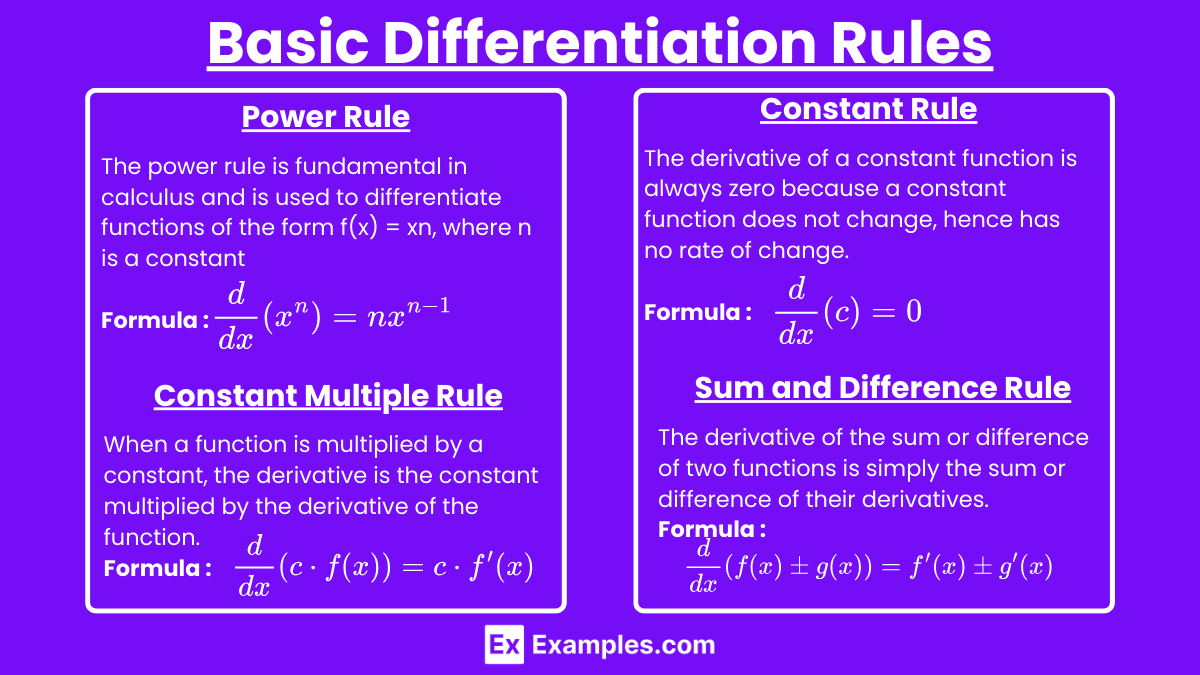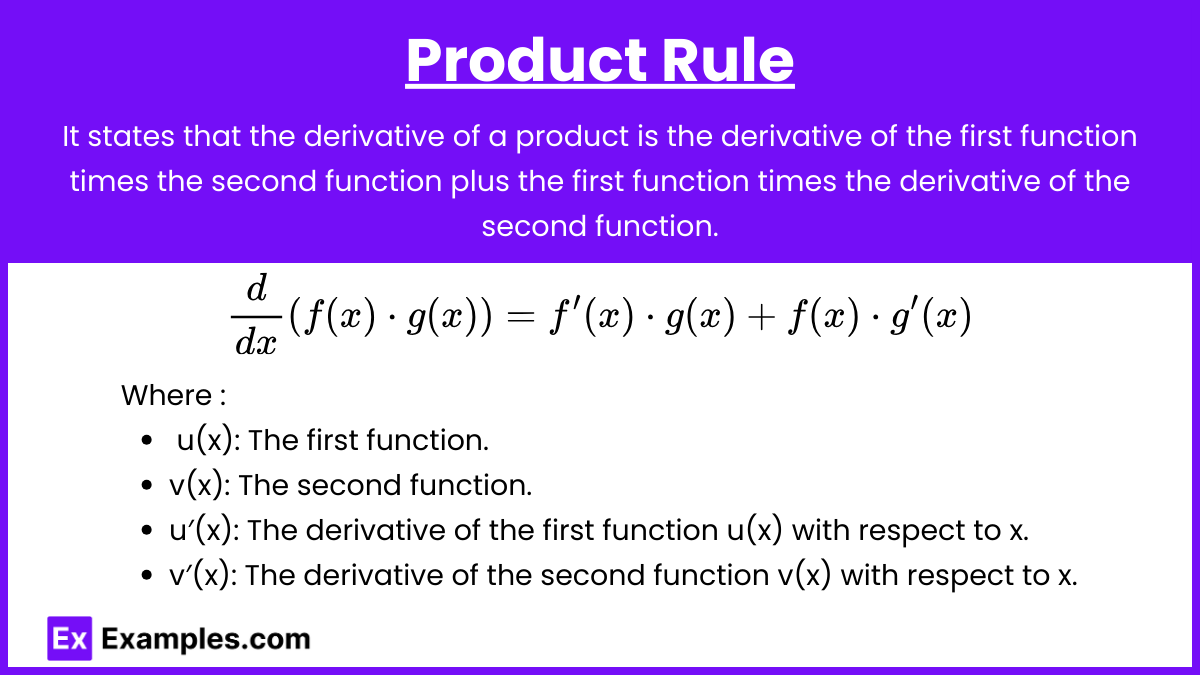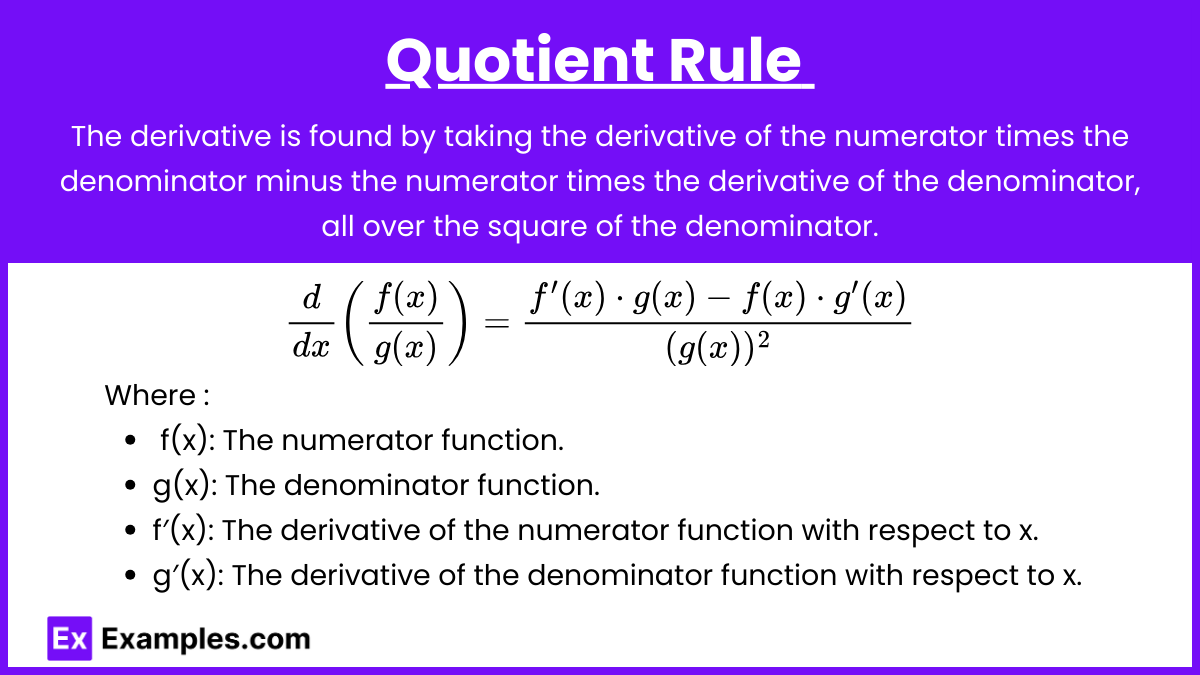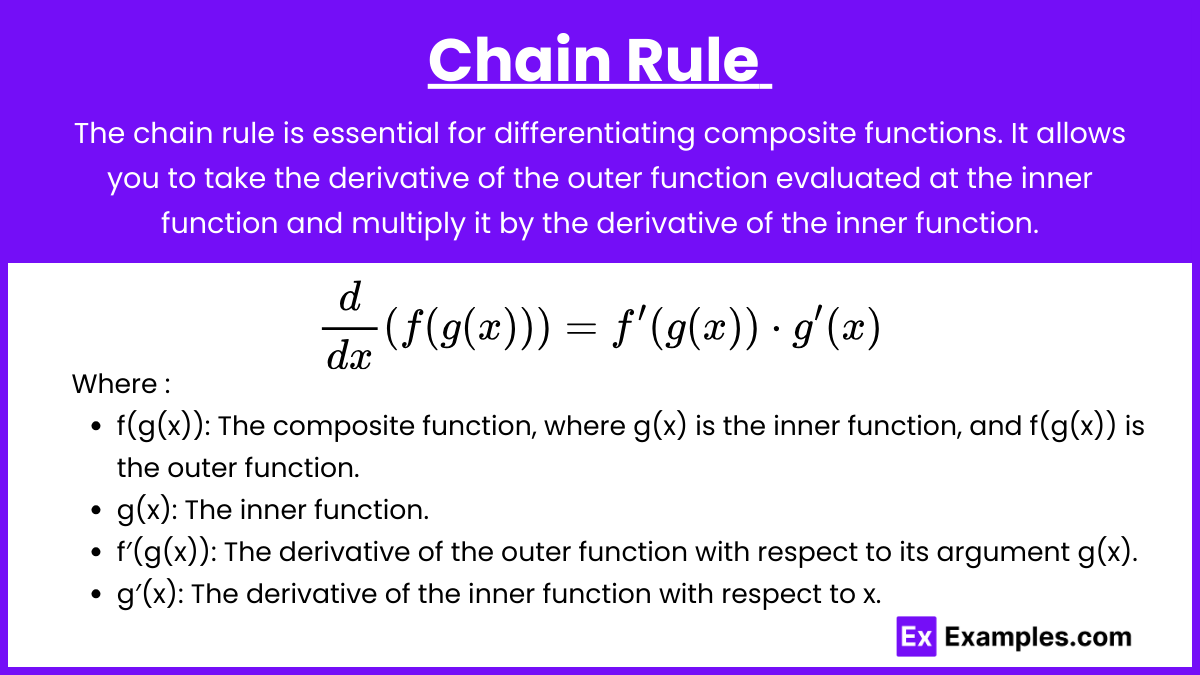Differentiation is a core concept in calculus, essential for analyzing the behavior of functions. Applying differentiation rules allows us to find rates of change, slopes of tangent lines, and optimize functions, all of which are critical skills in both AP Calculus AB and BC. Mastery of these rules, including the power, product, quotient, and chain rules, as well as techniques like implicit differentiation, is vital for solving a wide range of problems, from basic algebraic functions to complex applications in real-world scenarios.
Free AP Calculus AB Practice Test
Free AP Calculus BC Practice Test
Learning Objectives
When studying "Applying Differentiation Rules" for the AP Calculus exam, you should focus on mastering the power, product, quotient, and chain rules, as well as implicit and logarithmic differentiation. Learn to apply these rules to find derivatives of algebraic, trigonometric, exponential, and logarithmic functions. Practice identifying and solving critical points, optimization problems, and related rates scenario in AP Calculus AB. Additionally, for AP Calculus BC, understand how to differentiate parametric and polar equations. Proficiency in these areas is essential for solving complex calculus problems effectively.
Applying Differentiation Rules: AP Calculus AB & BC
Differentiation is a fundamental concept in calculus, and mastering its rules is essential for success in both the AP Calculus AB and AP Calculus BC exams. Below are detailed notes that will help you understand and apply the differentiation rules effectively.
1. Basic Differentiation Rules

a) Power Rule : The power rule is fundamental in calculus and is used to differentiate functions of the form f(x) = xn, where n is a constant (including both positive and negative integers, fractions, and irrational numbers).
Formula:
Example: If f(x)=x5, then f′(x)=5x4.
b) Constant Rule : The derivative of a constant function is always zero because a constant function does not change, hence has no rate of change.
Formula:
Example: If f(x)=7, then f′(x)=0.
c) Constant Multiple Rule : When a function is multiplied by a constant, the derivative is the constant multiplied by the derivative of the function.
Formula:
Example: If f(x) = 3x4, then f′(x) = 3⋅4x3 = 12x3.
d) Sum and Difference Rule : The derivative of the sum or difference of two functions is simply the sum or difference of their derivatives.
Formula:
Example: If f(x) = x3+2x2, then f′(x) = 3x2+4x.
2. Product Rule

The product rule is used when differentiating the product of two functions. It states that the derivative of a product is the derivative of the first function times the second function plus the first function times the derivative of the second function.
Formula:
u(x): The first function.
v(x): The second function.
u′(x): The derivative of the first function u(x) with respect to x.
v′(x): The derivative of the second function v(x) with respect to x.
Example:
If f(x) = x2 and g(x) = sin(x), then
f′(x) = 2x
g′(x) = cos(x)
So, d/dx (x2⋅sin(x)) = 2x⋅sin(x)+x2⋅cos(x)
3. Quotient Rule

The quotient rule is used to differentiate the quotient of two functions. The derivative is found by taking the derivative of the numerator times the denominator minus the numerator times the derivative of the denominator, all over the square of the denominator.
Formula:
f(x): The numerator function.
g(x): The denominator function.
f′(x): The derivative of the numerator function with respect to x.
g′(x): The derivative of the denominator function with respect to x.
(g(x))2: The square of the denominator function.
Example:
If f(x) = x3 and g(x) = x2+1, then
f′(x) = 3x2
g′(x) = 2x
So, d/dx (x2+1x3)=(x2+1)23x2⋅(x2+1)−x3⋅2x
4. Chain Rule

The chain rule is essential for differentiating composite functions (functions within functions). It allows you to take the derivative of the outer function evaluated at the inner function and multiply it by the derivative of the inner function.
Formula:
f(g(x)): The composite function, where g(x) is the inner function, and f(g(x)) is the outer function.
g(x): The inner function.
f′(g(x)): The derivative of the outer function with respect to its argument g(x).
g′(x): The derivative of the inner function with respect to x.
Example:
If f(x) = sin(x2), let u = x2, so f(u) = sin(u). Then
f′(u) = cos(u)⋅u′(x) = cos(x2)⋅2x = 2x⋅cos(x2)
Examples
Example 1: Power Rule
Consider the function f(x)=x4. To find the derivative, apply the power rule:
f′(x)=4x3. This shows that the derivative of x4 is 4x3.
Example 2: Product Rule
For the function f(x)=x2⋅ex, use the product rule to differentiate:
f′(x)=2x⋅ex+x2⋅ex
This result combines the derivatives of each factor.
Example 3: Quotient Rule
Simplifying gives the derivative of the quotient.
Example 4: Chain Rule
This shows how the chain rule is used to differentiate composite functions.
Example 5: Implicit Differentiation
Multiple Choice Questions
Question 1
What is the derivative of f(x) = 7x2?
A. 14x
B. 7x
C. 14x2
D. 7x3
Correct Answer: A
Explanation: To differentiate f(x) = 7x2, apply the power rule. Multiply the exponent by the coefficient:
2×7=14
Then subtract one from the exponent:
x2−1 = x
So, f′(x) = 14x, which corresponds to option A.
Question 2
If g(x) = x3−4x, what is g′(x)?
A. 3x2+4
B. 3x2−4
C. 3x2−4x
D. x2−4
Correct Answer: B
Explanation: To differentiate g(x) = x3−4x, apply the power rule:
The derivative of x3 is 3x2.
The derivative of −4x is −4.
Thus, g′(x) = 3x2−4, which corresponds to option B.
Question 3
What is the derivative of the constant function h(x) = 5?
A. 5
B. 0
C. 1
D. −5
Correct Answer: B
Explanation: The derivative of any constant function is always zero because the slope of a constant function is flat (i.e., it doesn’t change). So, h′(x) = 0, which corresponds to option B.


